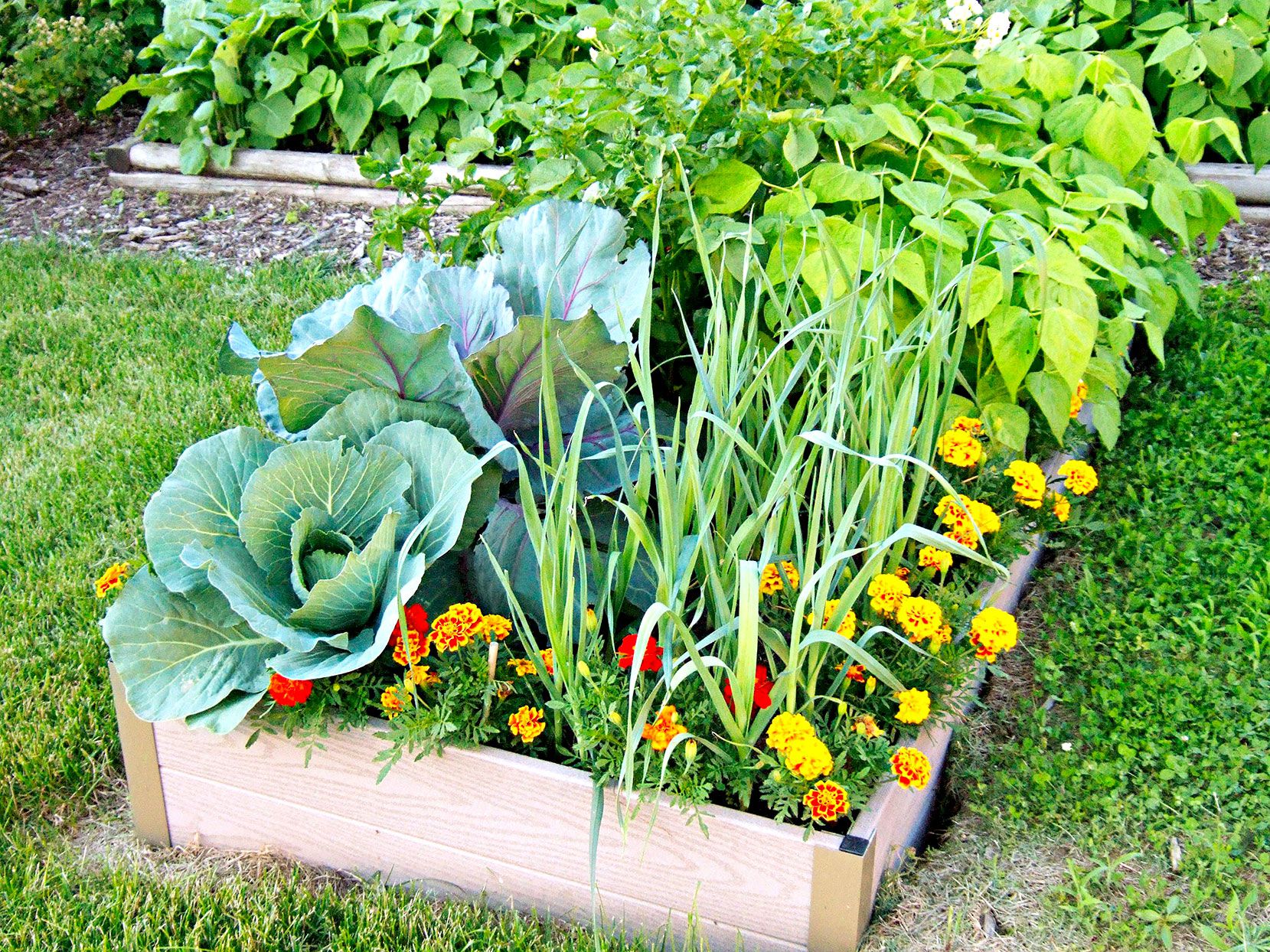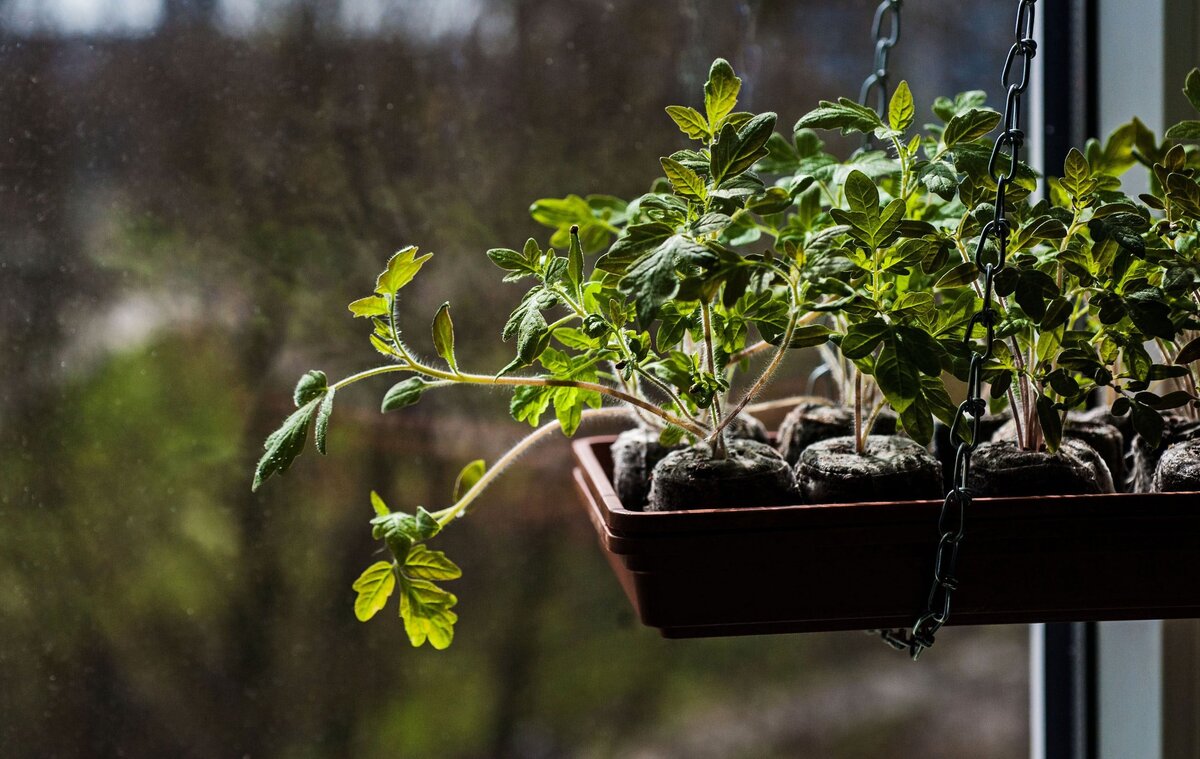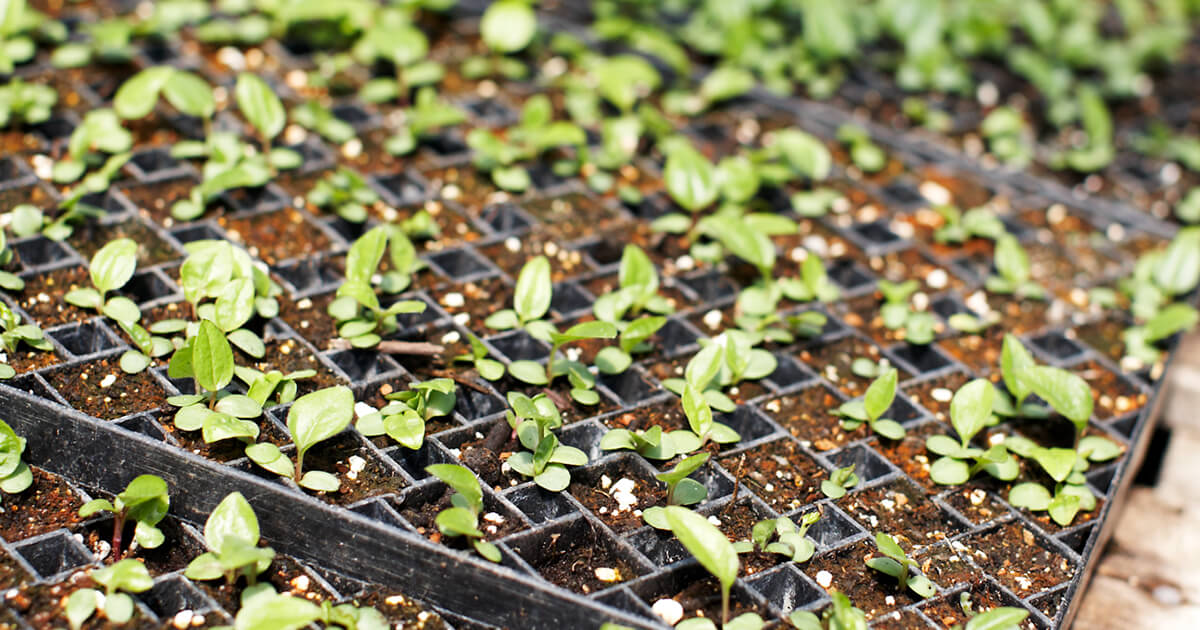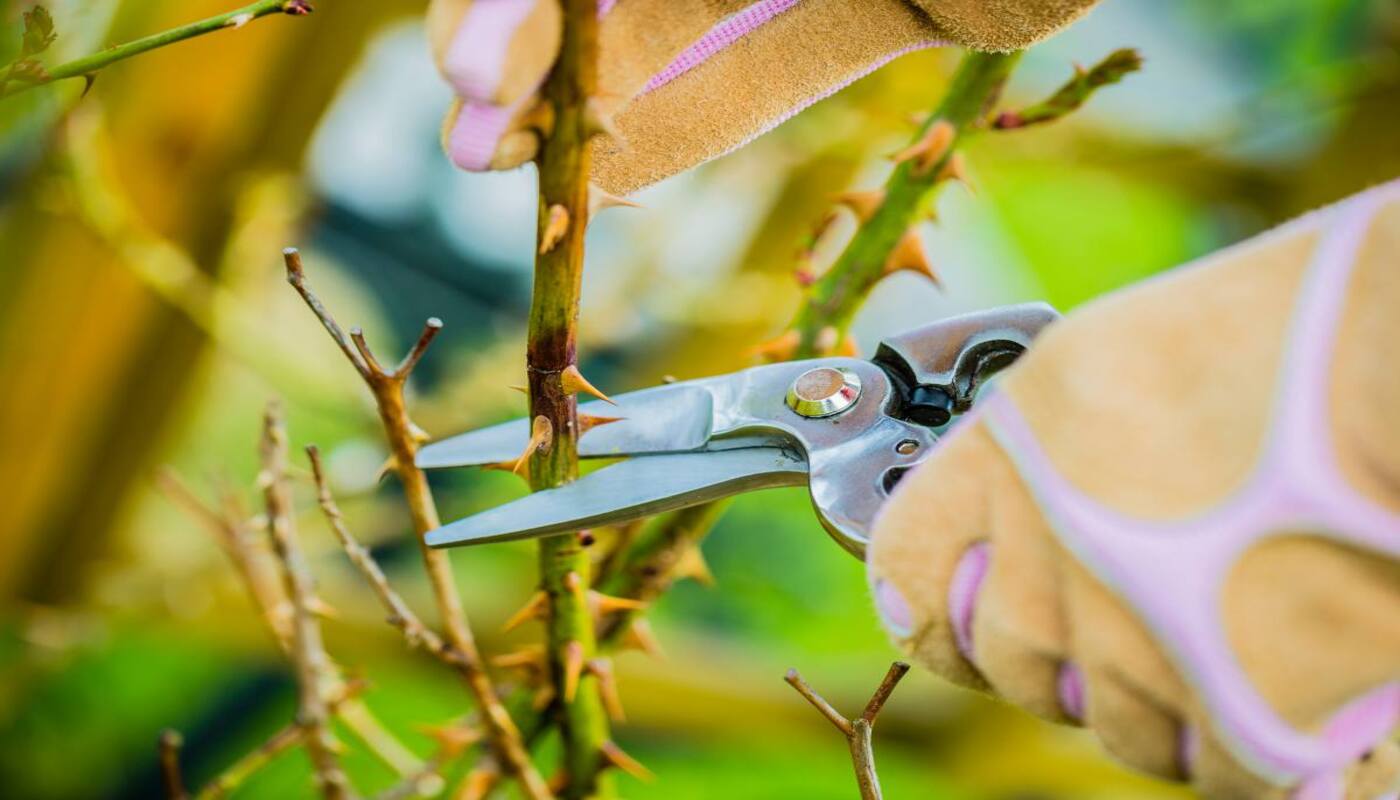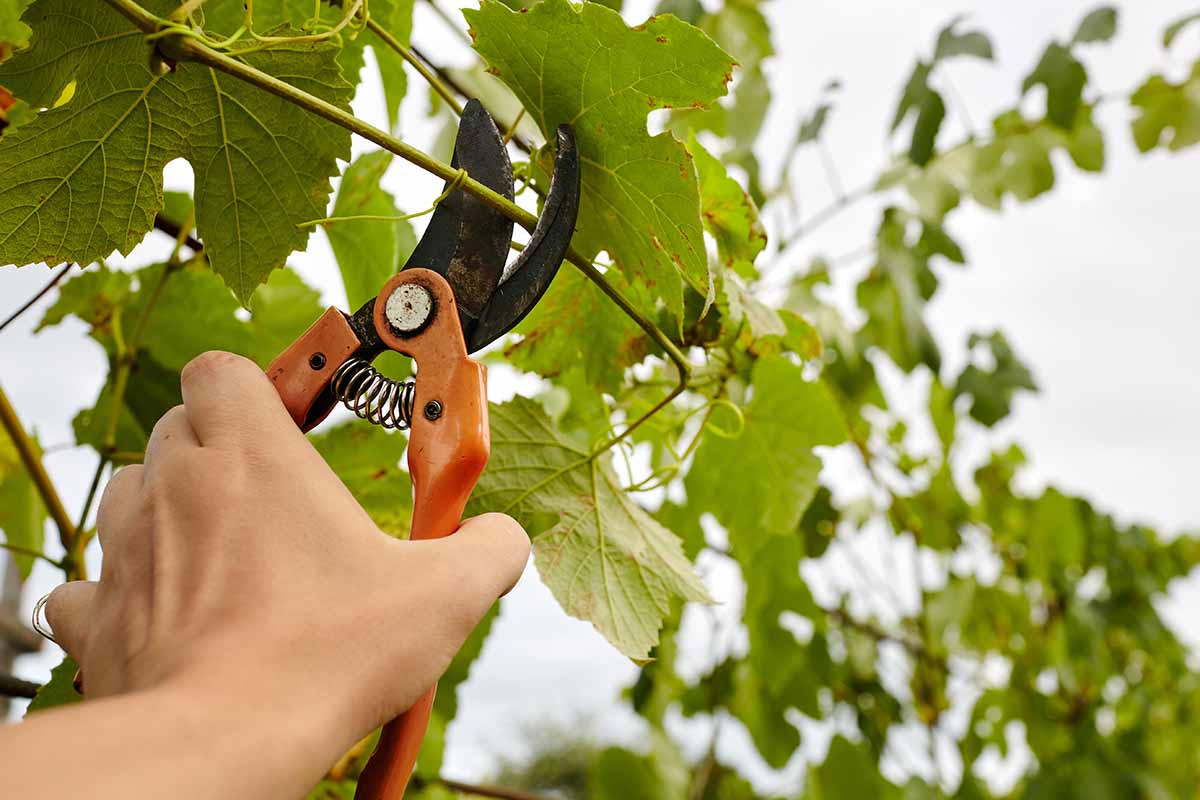Home>Gardening Techniques>Plant Care>When To Start Pruning Tomatoes


Plant Care
When To Start Pruning Tomatoes
Modified: January 22, 2024
Learn the essential plant care advice for pruning tomatoes and discover the best time to start. Boost your tomato plant's health and yield with proper pruning techniques.
(Many of the links in this article redirect to a specific reviewed product. Your purchase of these products through affiliate links helps to generate commission for Chicagolandgardening.com, at no extra cost. Learn more)
Table of Contents
Introduction
In the world of gardening, proper plant care is essential for ensuring healthy growth and a bountiful harvest. When it comes to the cultivation of tomatoes, pruning is a technique that can greatly benefit their overall development. Pruning involves selectively removing certain parts of the tomato plant, such as branches, leaves, and suckers. This practice not only helps to improve airflow and sunlight penetration but also encourages higher fruit production.
Pruning tomatoes is not a one-size-fits-all approach, as each plant and growing situation is unique. Understanding when to start pruning and how to do it correctly can make a significant difference in the overall health and productivity of your tomato plants. In this article, we will explore the benefits of pruning tomatoes, factors to consider before pruning, and guidelines for when to start pruning.
By the end of this article, you will have a comprehensive understanding of the importance of pruning, and you will be equipped with the knowledge to confidently begin pruning your own tomato plants.
Benefits of Pruning Tomatoes
Pruning tomatoes offers a variety of benefits that can promote healthier plants and increase the quantity and quality of the fruit they produce. Here are some key advantages to consider:
- Improved Air Circulation: Pruning helps increase airflow around the plant, reducing the chances of fungal diseases and promoting better overall plant health. Proper air circulation also minimizes the risk of moisture build-up, which can lead to rot or other issues.
- Increased Sunlight Exposure: Removing excess foliage allows more sunlight to reach the lower parts of the plants, including the fruit clusters. This promotes better ripening, a higher sugar content, and more flavorful tomatoes.
- Controlled Plant Size: Pruning helps manage the size and shape of the plant. This is particularly beneficial for those with limited space, such as home gardeners or urban growers. By removing unwanted growth, you can keep your tomato plants compact and well-organized.
- Enhanced Fruit Production: Pruning redirects the plant’s energy towards fruit development by removing unnecessary branches and suckers. This encourages larger and more abundant fruit production, resulting in a more productive harvest.
- Efficient Resource Allocation: By removing excessive foliage and non-productive branches, pruning ensures that the plant’s resources, such as water and nutrients, are directed toward fruit development rather than supporting unnecessary vegetative growth.
While the benefits of pruning tomatoes are appealing, it is essential to consider certain factors before diving into the pruning process. Understanding these factors will help you determine when and how to prune your tomato plants effectively.
Factors to Consider Before Pruning
Before you grab your pruners and start snipping away at your tomato plants, it’s important to take into account a few key factors. These factors will help you make informed decisions about when and how to prune your tomatoes. Let’s take a closer look at what you need to consider:
- Plant Variety: Different tomato varieties have different growth habits and pruning requirements. Indeterminate varieties, which continue to grow and produce fruit throughout the growing season, may benefit more from regular pruning. Determinate varieties, on the other hand, have a predetermined growth pattern and may require minimal pruning.
- Growth Stage: Tomato plants go through various growth stages, and each stage requires specific care. It’s important to understand the growth stage of your plants before pruning, as some stages may be more susceptible to stress or damage from pruning.
- Location and Climate: Consider the climate and location in which your tomato plants are growing. Pruning practices may vary depending on whether your plants are grown in containers, raised beds, or in-ground gardens. Additionally, factors such as temperature, humidity, and sunlight availability can influence pruning decisions.
- Timing: Proper timing is crucial when it comes to pruning tomatoes. Pruning too early or too late in the growing season can disrupt the plant’s development and fruiting. Understanding the appropriate timing for pruning will help maximize the benefits without causing harm to your plants.
- Personal Preference: Lastly, consider your goals and personal preferences for your tomato plants. Some gardeners prefer a more natural, bushy appearance, while others prioritize maximizing fruit production. Understanding your desired outcome will guide your pruning decisions.
By considering these factors, you can tailor your pruning approach to suit the individual needs of your tomato plants. Now that we’ve explored these essential considerations, let’s delve into when you should start pruning your tomatoes.
When to Start Pruning
The timing of when to start pruning tomatoes is crucial for achieving optimal results. The decision on when to begin pruning depends on several factors, including the growth stage of the plant and the overall health of the tomato vines. Here are some guidelines to help you determine the right time to start pruning:
- Established Root System: Tomato plants should have a well-established root system before pruning begins. This usually occurs around 4-6 weeks after transplanting the seedlings into the garden or containers. Pruning too early, when the plants are still establishing their roots, can inhibit their growth and overall development.
- Vigorous Growth: Wait until your tomato plants have developed strong, vigorous growth before considering pruning. This typically happens when the plants have reached a height of 12-18 inches (30-45 cm) and have multiple branches and leaves.
- First Flower Cluster: Another indicator that it’s time to start pruning is when the tomato plants have formed their first flower cluster. This signals that the plants are transitioning from vegetative growth to reproductive growth. Pruning at this stage will redirect the plant’s energy towards fruit production rather than excessive foliage.
- Pest or Disease Issues: If you notice any signs of pests or diseases on your tomato plants, it’s best to address those issues before starting pruning. Pruning can create open wounds on the plants, making them more susceptible to further damage or infection. Ensure that your plants are in good health before proceeding with pruning.
- Weather Conditions: Consider the weather conditions when deciding when to start pruning. It’s advisable to wait for a stretch of dry and sunny weather, as wet and humid conditions can increase the risk of fungal diseases. Pruning in dry conditions allows the wounds to heal faster and reduces the chances of infection.
By paying attention to these factors and following these guidelines, you can determine the most appropriate time to start pruning your tomato plants. Next, we will explore the signs that indicate it’s time to prune.
Signs that Indicate It’s Time to Prune
Knowing when to prune your tomato plants can be determined by observing certain signs that indicate the right time. These signs will help you identify when the plants are ready for pruning and optimize the benefits of this practice. Here are some key signs to look for:
- Excessive Foliage: If your tomato plants have an abundance of leaves and branches, it may be time to start pruning. Too much foliage can create a dense canopy that hinders airflow and sunlight penetration.
- Sucker Growth: Suckers are the small shoots that appear in the axils of the main stem and branches. When these suckers grow more than 2-3 inches (5-7 cm) long, it’s a sign that it’s time to prune. Removing suckers helps redirect energy to the main stem and existing fruit clusters.
- Overcrowding: If your tomato plants are growing in close proximity to each other or other plants, pruning can help create a more open and organized growing space. This allows adequate sunlight and air circulation.
- Diseased or Damaged Foliage: If you notice any signs of disease or damage on the leaves or branches of your tomato plants, it’s time to prune those affected parts. Removing diseased or damaged foliage helps prevent the spread of diseases and promotes overall plant health.
- Difficulty in Harvesting: When the foliage of your tomato plants becomes dense and tangled, it can make it challenging to harvest the fruits. Pruning can help simplify the process by removing excess foliage and providing easier access to the ripening tomatoes.
- Limited Sunlight: Tomatoes thrive in full sun, and if your plants are not receiving enough sunlight due to shading or crowding, it’s time to prune. Removing excessive foliage will allow more sunlight to reach the lower parts of the plants and improve fruit ripening.
Observing these signs will help you determine the appropriate time to start pruning your tomato plants. In the next section, we will provide a step-by-step guide on how to prune tomatoes properly.
Step-by-Step Guide to Pruning Tomatoes
Pruning tomatoes may seem intimidating, but with the right techniques, it can be a straightforward and rewarding process. Follow this step-by-step guide to prune your tomato plants effectively:
- Prepare the Tools: Gather a pair of clean and sharp pruning shears or scissors. Ensure they are sanitized to prevent the spread of diseases.
- Identify the Suckers: Look for the small shoots that emerge in the leaf axils. These are known as suckers and can be identified by their soft and new growth.
- Determine the Pruning Level: Decide how much foliage you want to remove based on your preferences and the growth habit of your tomato plants. Some gardeners prefer to remove all the suckers, while others only prune the lower ones.
- Prune the Suckers: Using your pruning shears or scissors, carefully remove the identified suckers by making a clean cut just above the base of the sucker. Avoid tearing or damaging the main stem.
- Remove Excessive Foliage: If there is excessive foliage and overcrowding, selectively remove some of the non-productive branches and leaves. Focus on removing the ones that are blocking sunlight or causing overcrowding.
- Prune Damaged or Diseased Foliage: Inspect the plant for any damaged or diseased foliage, and prune those parts to prevent further spread of diseases or pests.
- Maintain a Balance: While pruning, aim to maintain a balance between removing excess foliage and ensuring the plant has enough leaves for photosynthesis and energy production.
- Dispose of Pruned Debris: Collect and remove the pruned branches and leaves from the garden to prevent potential disease transmission.
Remember, the specific pruning techniques and intensity may differ based on the variety of tomato plants you are growing and your personal goals for your garden. Regular monitoring and adjustment are key to achieving the desired results.
Now that you know how to prune your tomato plants successfully, it’s essential to be aware of some common mistakes to avoid.
Common Mistakes to Avoid
While pruning tomatoes can be beneficial, it’s important to avoid certain common mistakes that could harm the plants. By being aware of these pitfalls, you can ensure that your pruning efforts yield positive results. Here are some common mistakes to avoid when pruning tomatoes:
- Over-Pruning: One of the most common mistakes is pruning too much, especially in a single session. Removing excessive foliage can stress the plants and potentially reduce their ability to produce energy through photosynthesis. Prune selectively and avoid removing more than a third of the plant at a time.
- Pruning Too Early: Pruning too early in the growth stage can inhibit the development of the root system and overall plant growth. Wait until the tomato plants have established a strong root system and have reached a suitable size before starting to prune.
- Removing Fruit-bearing Stems: During the pruning process, make sure to avoid removing stems that have fruit clusters or blossoms. These stems are essential for the production of tomatoes and should be preserved.
- Pruning in Unfavorable Conditions: Pruning in hot, sunny, or dry weather can increase the risk of sunburn and dehydration. It’s best to prune early in the morning or late in the afternoon when the temperature is cooler, and the plants are well-hydrated.
- Improper Pruning Cuts: Always make clean cuts just above the base of the sucker or branch you’re removing. Avoid tearing or damaging the main stem, as this can introduce pathogens and lead to infections.
- Not Sanitizing Pruning Tools: Failing to sanitize your pruning tools between cuts or between plants can spread diseases from one plant to another. Clean and disinfect your pruning shears or scissors before use and after pruning each plant.
By avoiding these common mistakes, you can ensure that your tomato plants remain healthy, productive, and continue to thrive throughout the growing season. Alongside these precautions, it’s helpful to keep some additional tips in mind for successful pruning, which we will cover in the next section.
Tips for Successful Pruning
Pruning tomato plants requires care and attention to ensure successful results. By following these tips, you can optimize your pruning efforts and maximize the health and productivity of your tomato plants:
- Start with Healthy Plants: Begin pruning with plants that are in good overall health. This includes addressing any nutrient deficiencies, pests, or diseases before pruning to minimize stress on the plants.
- Regular Monitoring: Keep a close eye on your tomato plants throughout the growing season. Regularly assess their growth and adjust your pruning techniques accordingly. This allows you to address any issues promptly and promote optimal plant development.
- Frequent, Light Pruning: Instead of a single heavy pruning session, consider light pruning more frequently. This allows for better maintenance of the plant’s shape and prevents excessive regrowth of suckers.
- Proper Timing: Prune your tomatoes during the cooler parts of the day to minimize stress on the plants. Avoid pruning during extreme heat or in direct sunlight to reduce the risk of sunburn and dehydration.
- Supporting Structures: Install sturdy support structures, such as stakes, cages, or trellises, to ensure that your tomato plants have proper support as they grow. This will help prevent branches from breaking under the weight of the fruit.
- Clean Pruning Tools: Before and after each pruning session, clean and sanitize your pruning tools to prevent the spread of diseases. Wiping the blades with a disinfectant solution or rubbing alcohol will suffice.
- Observe Proper Technique: Make clean cuts just above the base of the sucker or branch, avoiding tearing or damaging the main stem. This reduces the risk of introducing pathogens and promotes quick healing.
- Mulching: Apply a layer of organic mulch around the base of your plants to help conserve moisture, suppress weed growth, and regulate soil temperature. This will provide a favorable growing environment for your pruned tomato plants.
By implementing these tips, you will be well on your way to successfully prune your tomato plants and enjoy a fruitful harvest. Remember, each garden and plant may require slight adjustments, so pay attention to your specific plants’ needs and adjust your techniques accordingly.
Now that you have a comprehensive understanding of tomato pruning and the necessary tips for success, you can confidently begin pruning your own tomato plants with precision and care.
Conclusion
Pruning tomatoes is an essential practice for promoting healthy growth, maximizing fruit production, and maintaining an organized garden space. By selectively removing excess foliage, redirecting energy, and improving airflow and sunlight penetration, you can ensure that your tomato plants thrive throughout the growing season.
Before pruning, consider factors such as the plant variety, growth stage, location, and personal preferences. These factors will help you determine when to start pruning and how to tailor your approach to suit the needs of your tomato plants.
Remember to look out for signs that indicate it’s time to prune, such as excessive foliage, the presence of suckers, overcrowding, and limited sunlight. Pruning at the right time will allow you to achieve the best outcome and enhance the overall health and productivity of your tomato plants.
When pruning, follow a step-by-step guide, including preparing the tools, identifying and removing suckers, and selectively removing non-productive foliage. Stay mindful of common mistakes to avoid, such as over-pruning, pruning too early, and improper pruning cuts.
To ensure successful pruning, implement tips such as starting with healthy plants, periodically monitoring your plants, light and frequent pruning, proper timing, utilizing supporting structures, and maintaining clean pruning tools.
With these guidelines and tips in hand, you can confidently embark on your tomato plant pruning journey. By maintaining a balance between foliage removal and plant health, you’ll be rewarded with healthier plants, increased fruit production, and a bountiful harvest from your tomato garden.
